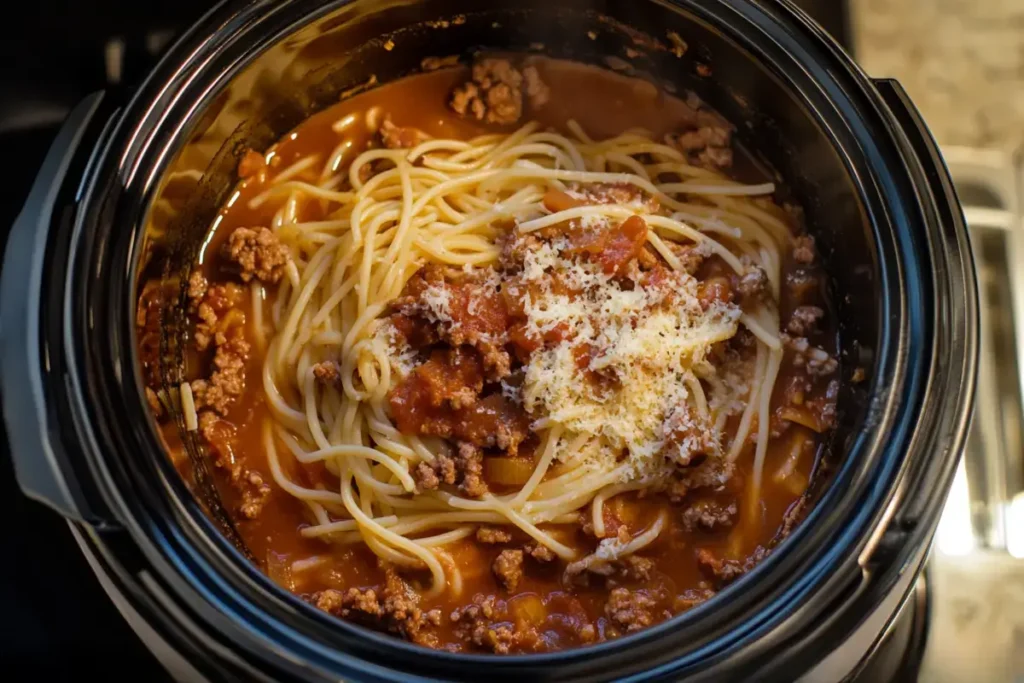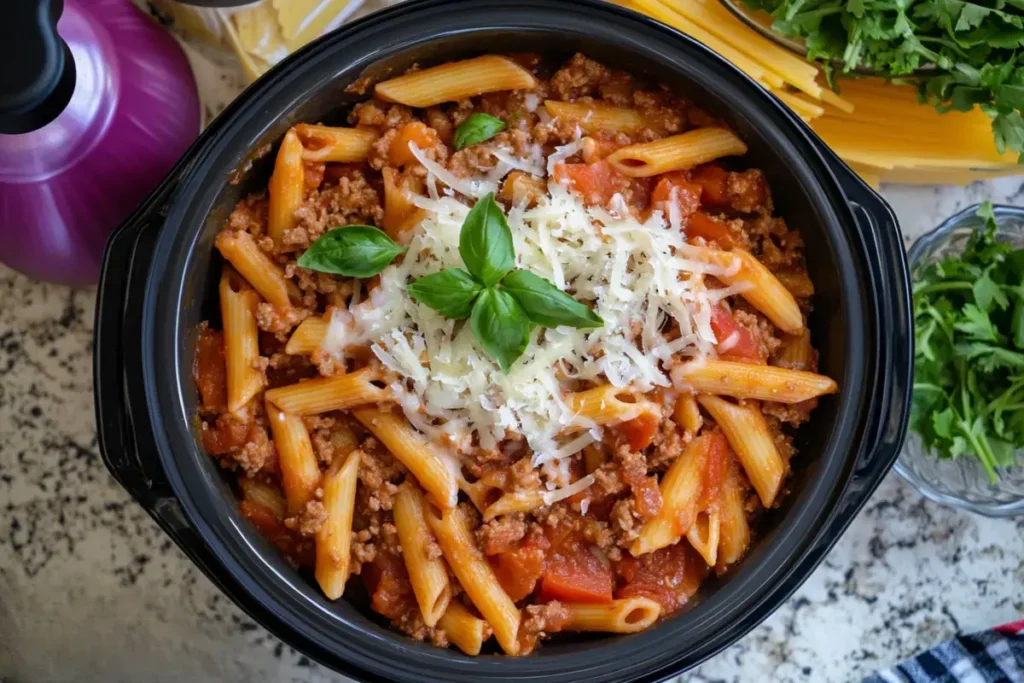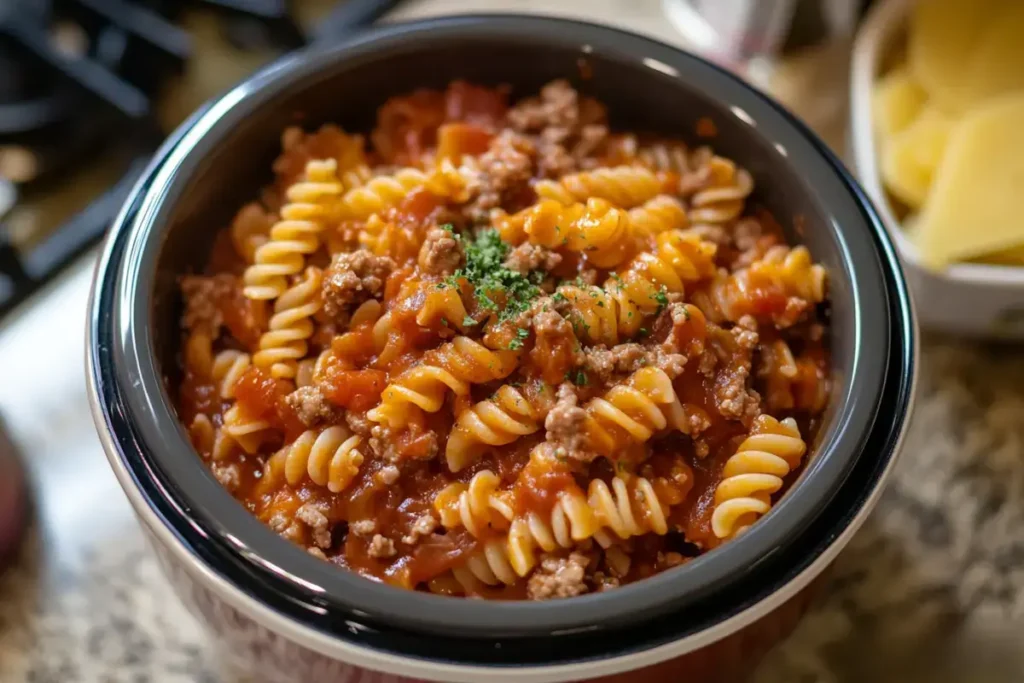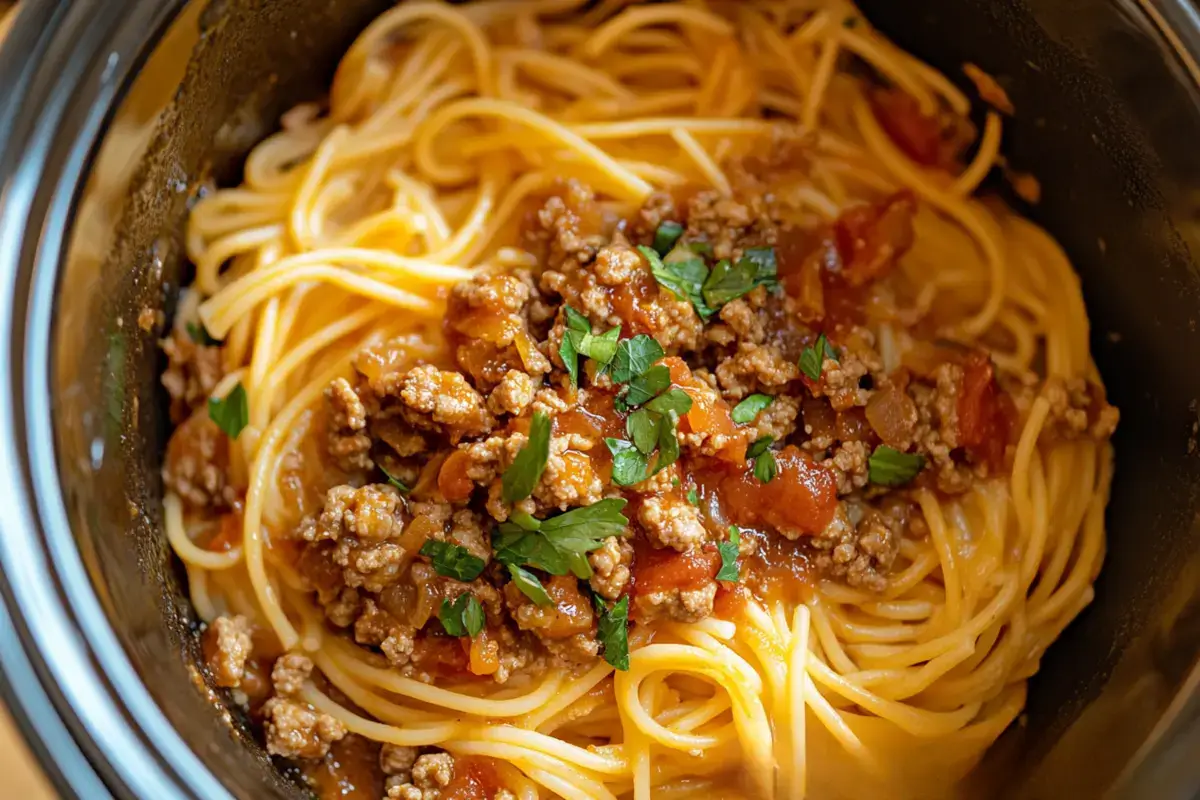Hey friends, it’s Jessika from Boldy Recipes! If you’ve ever ended up with a pot of mush instead of beautiful, tender noodles in your slow cooker, you’re definitely not alone. This is one of the most common crockpot disasters I hear about, and I’ve experienced it myself more times than I’d like to admit when I was first learning. The good news is that mushy noodles are completely preventable once you understand what’s happening and how to avoid it. Let me explain exactly why this happens and how to fix it.
The Science Behind Mushy Noodles
Noodles absorb liquid continuously as long as they’re in it. On the stovetop, you control this by timing you drain them when they’re al dente. In a crockpot, noodles sit in hot liquid for hours, absorbing way more moisture than they should and breaking down their structure completely.
Additionally, the constant heat breaks down the starches in pasta, turning them from tender to mushy to eventually disintegrating entirely. What you end up with is a thick, gluey mess instead of distinct noodles.

Timing Is Everything
The biggest mistake I see is adding noodles at the beginning of cooking. Never, ever do this. I learned this the hard way when I dumped egg noodles into my crockpot with chicken for an 8-hour cook time. The result was basically chicken-flavored paste.
Add noodles only in the last 30-45 minutes of cooking on high heat. This gives them just enough time to cook through without over-absorbing liquid and falling apart. Set a timer it’s easy to forget when you’re in the middle of dinner prep.
Choose the Right Noodles
Not all noodles are created equal in the slow cooker. Egg noodles hold up better than regular pasta because they contain eggs, which add structure. Wide egg noodles are my go-to for crockpot chicken and noodles.
Avoid delicate pastas like angel hair or thin spaghetti they’ll turn to mush almost immediately. Also skip fresh pasta, which cooks in minutes and has no place in a slow cooker.
My Best Prevention Method
Here’s what I actually do most of the time: I cook the noodles separately on the stovetop and add them to individual bowls when serving. The crockpot contains the chicken and sauce, and I boil noodles fresh right before dinner.
This takes only 8-10 minutes and guarantees perfect texture every time. Plus, leftovers store much better when noodles and sauce are separate you can reheat without the noodles turning to complete mush.

The Liquid Ratio Problem
Another issue: crockpots don’t allow evaporation like stovetop cooking. If you add noodles to too much liquid, they’ll absorb excessively and become waterlogged even if your timing is right.
When I do add noodles directly to the crockpot, I make sure there’s just enough liquid to cover them by about an inch. If your crockpot has excess liquid, remove some before adding noodles.
What to Do If It’s Already Mushy?
If you’ve already got mushy noodles, honestly, there’s not much you can do to salvage them. I’ve tried. The structure is broken down and can’t be restored.
Your best bet is to embrace it as a thick, stew-like dish. Add more broth or cream to thin it out slightly, season generously, and serve it as a thicker “comfort bowl” rather than traditional chicken and noodles.
My Foolproof Crockpot Noodle Method
Here’s exactly what I do:
- Cook chicken and vegetables in the crockpot for the full cooking time (6-8 hours on low)
- About 30 minutes before serving, turn to high
- Add dry egg noodles and stir to submerge
- Cook for 30-40 minutes until just tender
- Serve immediately
Or alternatively:
- Make everything in the crockpot except noodles
- Boil noodles separately in the last 10 minutes
- Add cooked, drained noodles to the crockpot or individual bowls
- Stir and serve

FAQs
Q: Can I add uncooked pasta at the beginning if I reduce cooking time?
A: Even on a shorter cook time, noodles should go in during the last 30-45 minutes only. They cook quickly and will still get mushy.
Q: What if I’m gone all day and can’t add noodles later?
A: Cook noodles separately and store them in the fridge. Reheat with the crockpot contents when you get home, or cook them fresh it only takes 10 minutes.
Q: Do rice noodles work better in slow cookers?
A: No, they’re even more delicate. Rice noodles turn mushy faster than wheat-based pasta. Same rules apply add at the very end.
Q: Can I fix mushy noodles by adding more liquid?
A: This thins the dish but doesn’t fix the texture. Mushy noodles stay mushy. Prevention is key you can’t reverse overcooked pasta.

